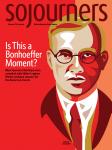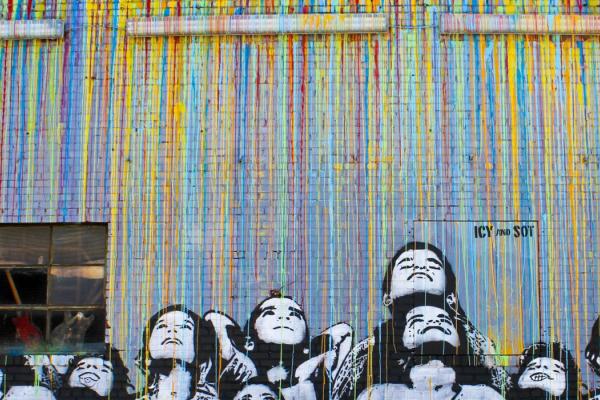This article appears in the February 2018 issue of Sojourners magazine. To subscribe, click here .
IN THE 2016 ELECTION, white Catholics and evangelicals voted overwhelmingly for Donald Trump and the Republican party’s “pro-life” platform. Since Trump’s election, the United States has also seen an unprecedented rise in hate speech and action, such as the Charlottesville rally, and other incidents aimed at minorities, immigrants, and Jews.
The Anti-Defamation League reports a 67 percent rise in anti-Semitic attacks in the U.S. over 2016; anti-Semitic incidents in K-12 private, public, and parochial schools have more than doubled, including harassment, vandalism, and physical assault. These trends are the very opposite of the pro-life platform white Catholics and evangelicals held as a centerpiece for their voting choices.
The challenge of how to respond to a rising tide of hate is not a new one for Christians—nor is the complicity of churches in spreading it. While individuals and a few churches confronted hate speech and actions against Jews in the years of Nazi power in Germany, most supported the state. If we hope to do better today, we must educate our students not only about the end result of complicity and silence—genocide—but also about the stages of bias and hatred that are fertile ground for brutal, systemic violence.
To this end, the Anti-Defamation League has developed educational resources that empower teachers to teach the Holocaust for what it was—one horrific chapter in hundreds of years of anti-Semitism (rejection of the Jewish people) and anti-Judaism (rejection of the Jewish religion)—much of it tolerated and promoted by Christians. The ADL offers web-based teaching tools, including lesson plans designed specifically to help students recognize the early-warning signs of dangerous discriminatory behavior.
One such tool is the “pyramid of hate,” which shows biased behaviors growing in complexity from bottom to top. I use this tool in my Catholic high school theology classes to assist students in analyzing the rhetoric and actions around controversial topics, such as immigration, Black Lives Matter, and white supremacist activity. The pyramid of hate shows how violence against targeted groups begins with apparently benign acts, such as belittling jokes. Once this bias becomes culturally accepted, it can escalate: from bullying and slurs to discriminatory legislation and bias-motivated violence, all the way to genocide.
One tremendous gift of teaching in the language of faith, as I do, is the opportunity to push students to strive beyond the pyramid of hate. For that reason, we also use a “pyramid of love” in my classroom. Not only do students learn to identify and challenge hate, they learn constructive engagement for building a just society, using the tenets of their faith. The pyramid of love shows how small acts, such as inclusion, can build to acceptance and defense of dignity, then to alliances and solidarity with vulnerable populations, culminating with the “beloved community” or reign of God. Beyond teaching tolerance, we are finding ways to teach love.
As Christians, we have an obligation to teach students the truth about the ways our faith has been used in the past to justify prejudice, rejection, discrimination, violence, and oppression. If we don’t, they will be incapable of recognizing and fighting against the ways our faith is still misused today.

Got something to say about what you're reading? We value your feedback!

